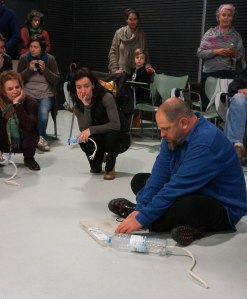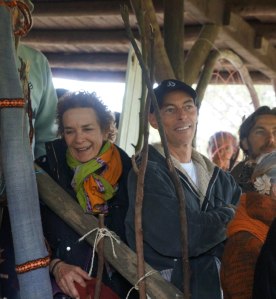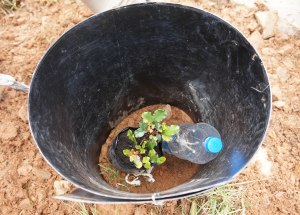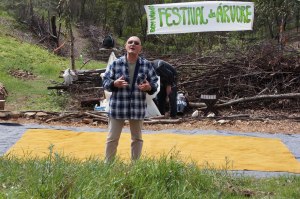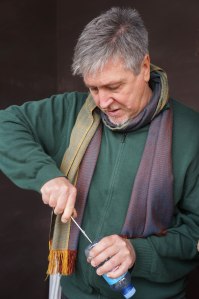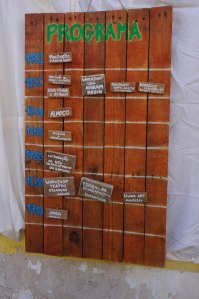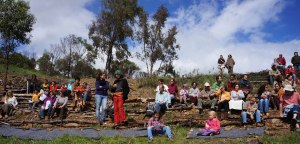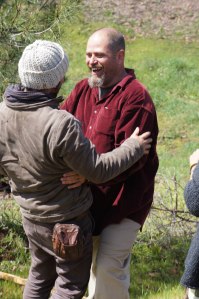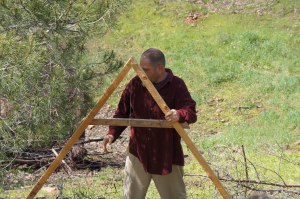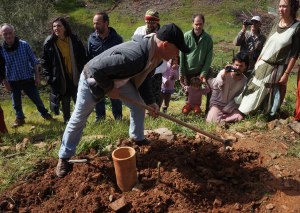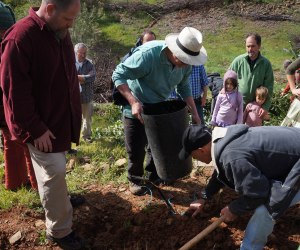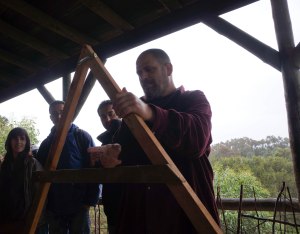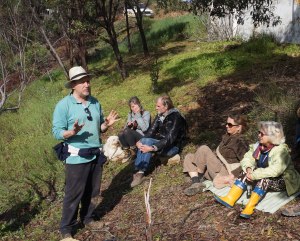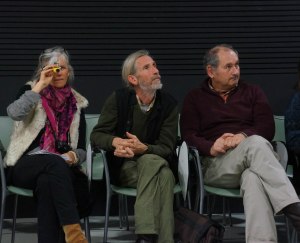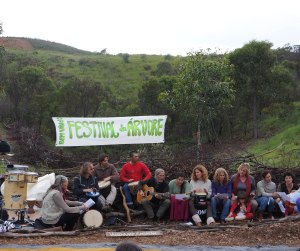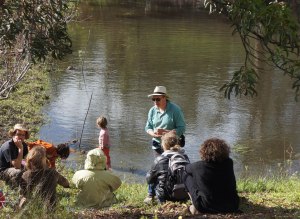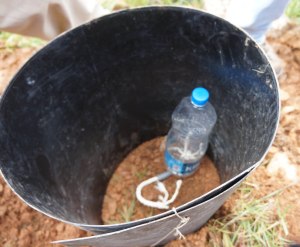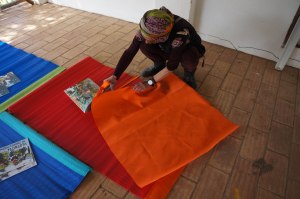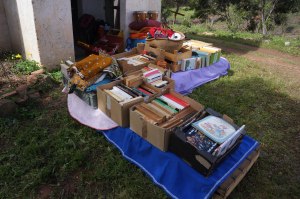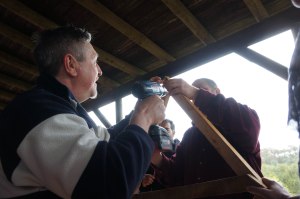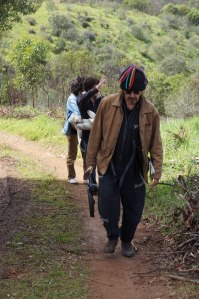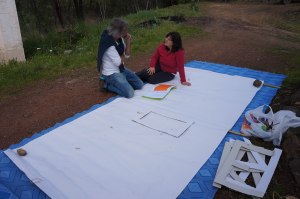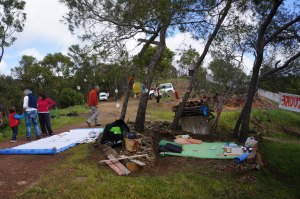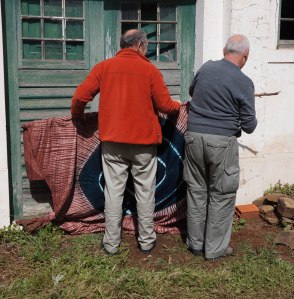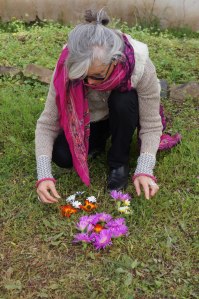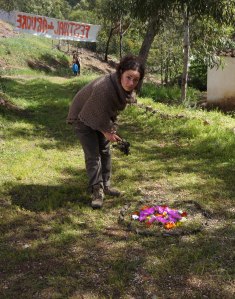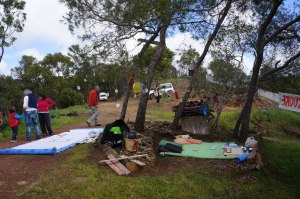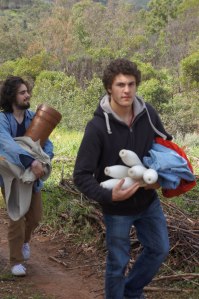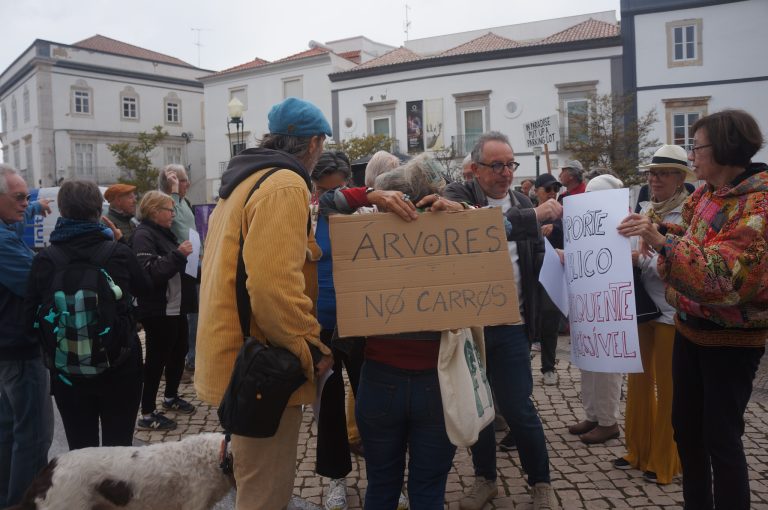Diggers and Dreamers – Making a difference in Tavira
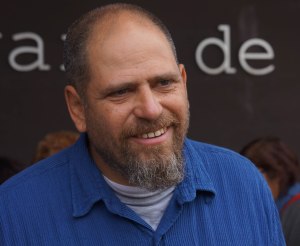
The three day “Festival of the Tree” organised by the Tavira Transition Movement, took place in the Library in Tavira and in Mata Santa Rita, during the weekend of 22-24 March. The main attraction of the festival was Aviram Rozin from Sadhana Forest Auroville, India. People from many nationalities came together, to learn from his successes and failures. He shared techniques for growing trees whilst conserving water. His work in Sadhana Forest, near Auroville, India, began in December 2003. The vision then was to transform 70 acres of severely eroded, arid land on the outskirts of Auroville. He has succeeded beyond what he hoped to do and people are taking notice.
In Auroville, India they planted more than 25,500 Tropical Dry Evergreen Forest plants of 160 different indigenous species. They are constantly mulched and cared for by a team of over 1000 volunteers, from 50 countries, who, each year, bring their own ideas and creativity to the work in the forest. Survival rate of the trees on average is between 80% – 90%. Survival rate does not fall below 70% even on the most degraded soil.
More than 20 kilometers of trenches were dug and eight earth dams built, altogether storing more than 50,000 cubic meters of rain water. As a result of this work, the underground water level has risen by 6 meters. This is from an average of 26 feet deep during 2003 (before Sadhana Forest was started) to an average of 6 feet during 2007 after four years of intensive water conservation work.
As part of the recognition of the work done, Sadhana Forest won the third place in the Humanitarian Water and Food Award 2010
The reason Aviram was invited to Tavira is because a few people are trying to learn ways to look after forest land, (loaned to them by Tavira Camara for five years), conserve water and manage the invasive growth of acacia trees. Aviram´s expertise has not only been tested in India, but also Haiti and Kenya. Aviram said “we discovered early on in our work, that we needed a worldwide grassroots movement”. “Water conservation and deforestation are the main problems for the 21st Century”. He said “I am a volunteer and I work with a team of about 20 experts and about 150 volunteers at any one time and we do what we do on about 2000 Euros a month”. “Large NGO´s cannot operate in this way”. “Our work is cost effective and it brings the right message to local people”. “Our work often means being in places and conditions that NGO’s will not go”. This was the case in Haiti after the volcano, he explained. He showed images of clothes sent by well meaning people in America, just rotting on the beaches. He said a couple of his team collected some of the rotting clothing for mulching trees. He said “what we bring is not just expertise, but we bring optimism and faith so that people can believe that they can stay on their land and change the fate of their lives”. He says “a Maya nut tree can feed a family” and that is why he is planting 100´s of thousands of these trees in Haiti.
On Friday evening Aviram explained in detail, to about 50 people in the library, for nearly two hours, how he works with local people to provide water conservation solutions. The small team of experts, who work with him, includes a JCB operator who knows exactly how to use machinery “as an extension of his arms”. Other expertise includes project managers and the odd celebrity who can attract large audiences so information can be shared much more easily. When asked what he would recommend for the Tavira group he said”I do not know much about how the group operates, but for the work they are doing in Mata Santa Rita I would I suggest that they involve some local expertise, people who have a deep understanding of water conservation and indigenous plants and try volcano planting and banking the soil along contour lines for zero run off of water”. “This was echoed by two attendees, one of whom has worked in Mozambique for the UN, the other Manuel da Silva Costa, who is an international agricultural engineer based in Loule. “What is needed” he said, “is an understanding of the soil. It may be a waste of time to plant carob trees in acid soil, amongst acacia” “They will survive but they will not thrive”. “What is needed is experience and planning ”.
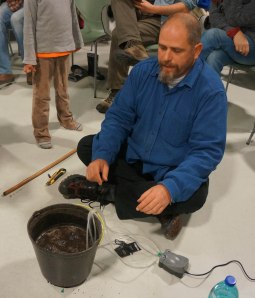
On Saturday, Aviram shared some excellent videos of the work done in Haiti, Kenya and India, he also explained the processes he uses to conserve water.
He also did two practical workshops on making small rafts to purify water with grasses, how to make compost tea, by aerating the mix with an pump and how to make irrigation systems using plastic bottles and rope that acts like a wick to distribute water to the roots of newly planted trees.
Sunday was a day spent at Mata Santa Rita in the forest. It started with Qigong for about 20 minutes in the open air with the call of birds, the breeze and a few drops of rain. About 100 people (including many children) came together for this open air celebration of the tree. Workshops and music filled the day. The main learning from the day came from Aviram. He showed people how to build and use an “A Frame”. “An ‘A’ Frame is used to find places of the same level on a hillside so that barriers can be made to stop the water and soil washing down the slope. This means more water can enter the soil, stopping it from drying up so quickly”. How to build the frame can be found here.
http://reap-eastafrica.org/blogs.info/reap/pdf/AFrame.pdf
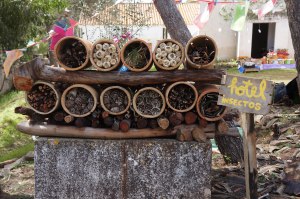
Other workshops took place in the open air, such as creating an insect hotel.
Developing water and land art was led by Mauricio Vandem, an Italian architect and artist. A herb spiral was created by Transition Tavira members, including, Terramada, a Community using Permaculture techniques. Children were encouraged to sing with Carlos and also to paint and draw with the Swedish, Tavira based artist Karsti Stiege. Music was also a feature of the day led by Jose Geraldes Barba, a German drummer and the Swedish guitarist, Johan Zachrisson.
More information about the Sadhana Forest project and to see the videos that are documenting the work can be found on the website. http://sadhanaforest.org/
A Transition Network’s role is to inspire, encourage, connect, support and train communities as they self-organise around the transition model, creating initiatives that rebuild resilience and reduce CO2 emissions.
For information on the Transition Movement http://www.transitionnetwork.org/about
For more information about Tavira Em Transição https://www.facebook.com/tavira.emtransicao?ref=ts&fref=ts
